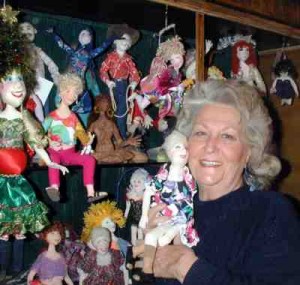Essay by Auden Schendler
Community – April 2006 – Colorado Central Magazine
A TEACHER FRIEND of mine just shook the change out of his trousers to buy and then fully remodel a dump in Telluride, Colo. The house cost $1 million, and it was the cheapest thing going. I didn’t ask about the cost of the remodel.
At the same time that my friend was assembling his financial house of cards, citizens voted to condemn a huge chunk of open space at the entrance to the town. The vote was widely understood as support for preservation over development, a triumph of environmentalism over greed. But it wasn’t, exactly.
If condemnation leads only to preservation, as it likely will, and not to other community benefits such as affordable housing or schools, the vote will represent the victory of small thinking over big picture, “me” over “us.” Real estate prices in Telluride are already beyond the reach of most common folk, the teachers, policemen, service workers, counselors, and other key community members we all want in our towns.
The failed proposal — clustered development that would protect 90 percent of the land, high density affordable housing, 22 trophy homes so the developer can make money and a school site — wasn’t perfect. The big homes were considered disgusting, bisecting the property, and a plan for ponds would have sapped the watershed. The vote means that the town has protected a stunning viewshed, but mostly, and increasingly, it’s for folks who live in Texas 10 months out of the year.
Aspen faces similar issues. Recently, the business I work for, Aspen Skiing Co., proposed a redevelopment plan for employee housing, which involved tearing down an existing structure, then constructing a new building with 10 more beds. At an early town council meeting, the room was packed with the same neighbors with the same objections from every town council meeting facing similar proposals: It’s too dense. It will be too noisy. Small- town character is why I chose to live in Aspen. It will crowd the streets.
But small- town character is more than the density of the building behind you. It means a place where workers live in the community; where traffic isn’t backed up for miles morning and night. Dense affordable housing belongs in the town core that was designed to accommodate it. Instead, NIMBYs will drive housing down valley as sprawl, threatening the quality of life they want to protect, polluting the air, clogging the roads, damaging the ambiance, and changing the climate. These citizens, and others throughout the West, are making bad decisions that are elitist, exclusionary and contrary to their own values.
Aspen smartly created growth controls in the 1970s, but that drove real estate values up wildly, making Telluride’s million- dollar homes seem quaint. (Try $10 million, amateurs!) Aspen also has a vibrant land- conservation effort, but without associated affordable housing it drives up housing even more. What’s missing is thinking about our communities as systems, not as a series of distinct issues seen through a paper- towel roll.
Growth controls don’t work without increased density in the heart of town. Land conservation defeats itself without new affordable housing.
Another long- term Aspen sacred cow has been to preserve the curving, partly two- lane road going into town. The reason: This protects the small- town character. But a town besieged by road- ragers heading for work — a direct result of the two- lane and curves — is the antithesis of that goal.
OTHER EXAMPLES ABOUND. Aspen denied more housing density (lopping off a story) because it would block the view from the library. But I don’t think you’ll find the guy with the 25,000-square- foot house browsing climbing magazines and gazing wistfully out the library window. Citizen “environmentalists” also protected a small park, killing a proposal for more affordable housing. But who will sit in the park?
There is a micro- scale park in Aspen’s west end that’s perfect for a two- foot- tall, 20- pound toddler. Sometimes, my wife, Ellen, and I take our daughter, Willa, to play there. She loves the little ramps a few inches off the ground, and tromps across the mini- bridge, giggling. But in a beautiful three- month autumn we never saw another child, never heard a neighbor walk past.
The houses nearby, some of the most expensive in the country, stood empty, and Willa played happily alone among the silent mansions of a non- community, dark castles protecting a false dream of small- town character.
Auden Schendler is a contributor to Writers on the Range, a service of High Country News in Paonia, Colorado (hcn.org). He is the director of Environmental Affairs for Aspen Skiing Co. and lives in Basalt.

